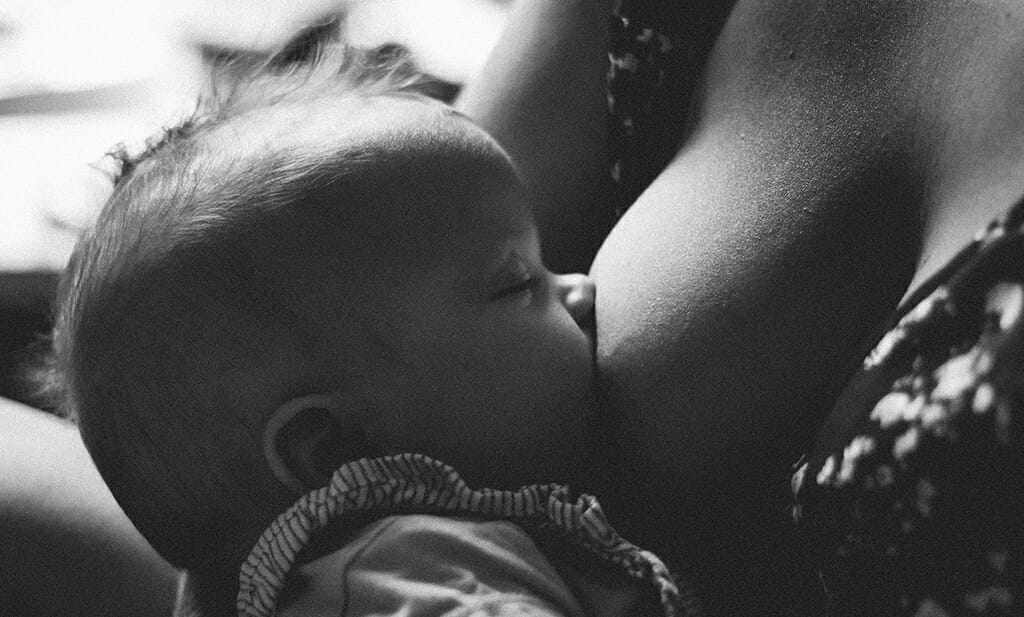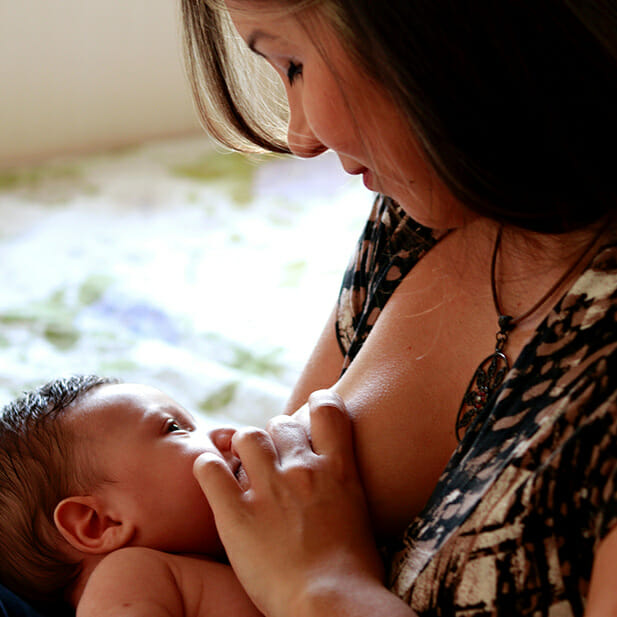
Of course, nothing beats breast milk. It is the healthiest food you can give your baby. But what if your milk is not enough to satisfy your baby? Or if your baby doesn’t gain weight fast enough after birth? Then supplementary feeding is often advised. For many mamas who would like to breast/chest feed, this feels like a defeat; the fear of never being able to breast/chest feed fully, or not being able to do so again, is high. Let’s take a closer look at why this doesn’t have to always be the case and how you can offer replacement milk in a breast/chest feeding-friendly way.
The four most common reasons for supplementary feeding
Bottles are often offered as a quick solution to breast/chest feeding dilemmas. However, are they really always necessary?
1. Baby has lost 10% of its birth weight or more
It is normal for babies to lose weight in the first few days after birth. Digestion and excretion occur for the first time – that is why the body loses weight. A loss of up to seven percent of the baby’s birth weight is considered “normal”. After a caesarean section, the weight loss is often greater in the first 12 hours because your baby is excreting more water. They have absorbed this through the infusions via the blood and thier birth weight has been affected. Some authors have suggested that instead of the birth weight, the weight of the baby 24 hours after birth should be used as the basis for the calculation.
If seven percent or more of weight loss is reached, it makes sense to have a breast/chest feeding counselling or support session to check whether your baby is getting enough milk. However, if your baby has lost more than 10 percent of its weight, this is a reason to start supplementary feeding and get to the bottom of the cause. You can use donated breast milk (please only from official sources and tested for diseases) or artificial pre-nutrition.
2. Baby has not regained its birth weight after 10-14 days
Frequent and prolonged breast/chest feeding in the first few days stimulates milk production. This means that the initial weight loss is usually compensated for after 10 days. The birth weight should be reached after 14 days at the latest, but it makes sense to take a closer look after seven to 10 days to see what is wrong. It is best to ask your midwife or contact an IBCLC breast/chest feeding counsellor. They can support you in finding the cause and help to get your milk production going to avoid supplementary feeding after 14 days. However, if this doesn’t work, you will have an expert on hand who knows how to maintain breast/chest feeding instead of formula feeding.
3. Weight gain is below the age-appropriate limit
Weight gain does not follow a straight line – this is normal. However, if your baby’s weight gain is well below the minimum expectations for their age, the cause should be understood more. If your baby is not getting enough energy, this can affect its physical development. Some babies cry more, others become extremely quiet as they try to save energy. In this case, supplementary feeding may be necessary. It makes sense to monitor weight progress using percentiles (also available as an app).
4. Breast/Chest feeding causes too much pain
If latching on is so painful that breast/chest feeding is almost unbearable, something is wrong. Breast/chest feeding should not hurt. Ensure you seek support early on if you are experiencing discomfort in order to avoid any pain and to find the cause.

Breast/chest feeding friendly – this is how it works
Every drop of breast milk counts, because it contains the body’s own defence substances. But if your milk is not enough for full breastfeeding, there is no shame in supplementing it with pre-nutrition. If you consult a midwife or breast/chest feeding counsellor early on, chances are that you will manage to increase your milk production so that you will soon be able to breast/chest feed fully. Once you have decided to supplement your breast/chest feeding, there are several different options available. Depending on how many millilitres of milk are needed, you can start by using a finger feeder, cup feeder (e.g. Softcup), syringe, pipette, teaspoon or breastfeeding kit instead of a bottle.
The following tips can help to keep feeding as short as possible:
Only feed small amounts
If the amount of milk fed is too large, your baby’s sleep intervals will sometimes be (briefly) prolonged and your milk production will be stimulated too infrequently. Therefore, it is better to give many small meals and always let your baby drink at the breast first – preferably from both breasts. This way your baby will continue to stimulate your milk production at least 10-12 times in 24 hours.
Cluster breast/chest feeding despite supplementary feeding
Particularly in the first few weeks, your baby will cluster breast/chest feed (breastfeed frequently over several hours) to stimulate your milk production. This is nerve-wracking, as it can last for hours, but it is an important process. You should not stop this process if you have a low weight gain, despite supplementary feeding as this is the only way to optimally stimulate milk production.
Avoid dummies and bottles from the beginning
Especially in the beginning, until breast/chest feeding goes smoothly, you should avoid dummies and bottles as much as possible. Instead, use one of the methods mentioned above, such as small cups or teaspoons.
In the next expert article on breast/chest feeding, we will give you some tips and tricks on how to stimulate the milk supply. Believe in yourself, because almost every woman can breastfeed.




